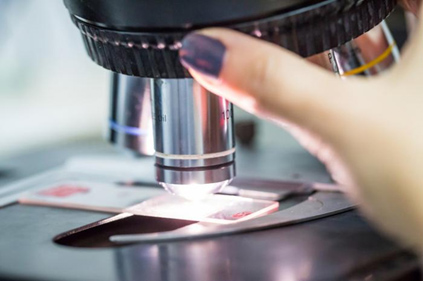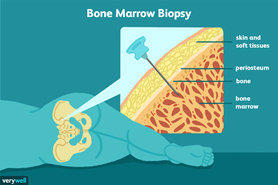Types of biopsies
Bone marrow biopsy
Inside some of your larger bones, like the hip or the femur in your leg, blood cells are produced in a spongy material called marrow.
If your doctor suspects that there are problems with your blood, you may undergo a bone marrow biopsy. This test can single out both cancerous and noncancerous conditions like leukemia, anemia, infection, or lymphoma. The test is also used to check if cancer cells from another part of the body have spread to your bones.
Endoscopic biopsy
Endoscopic biopsies are used to reach tissue inside the body in order to gather samples from places like the bladder, colon, or lung.
During this procedure, your doctor uses a flexible thin tube called an endoscope. The endoscope has a tiny camera and a light at the end. A video monitor allows your doctor to view the images. Small surgical tools are also inserted into the endoscope. Using the video, your doctor can guide these to collect a sample.
Needle biopsies
Needle biopsies are used to collect skin samples, or for any tissue that is easily accessible under the skin.
Skin biopsy
If you have a rash or lesion on your skin which is suspicious for a certain condition, does not respond to therapy prescribed by your doctor, or the cause of which is unknown, your doctor may perform or order a biopsy of the involved area of skin.
Surgical biopsy
Sometimes a patient may have an area of concern that cannot be safely or effectively reached using the methods described above or the results of other biopsy specimens have been negative. An example would be a tumor in the abdomen near the aorta. In this case, a surgeon may need to get a specimen using a laparoscope or by making a traditional incision.
Following up after a biopsy
After the tissue sample is taken, your doctors will need to analyze it. The sample will need to be sent to a laboratory for testing. The results can take anywhere from a few days to a few weeks.
Once the results arrive, your doctor may call you to share the results, or ask you to come in for a follow-up appointment to discuss the next steps.
If the results showed signs of cancer, your doctor should be able to tell the cancer’s type and level of aggression from your biopsy. If your biopsy was done for a reason other than cancer, the lab report should be able to guide your doctor in diagnosing and treating that condition.
If the results are negative but the doctor’s suspicion is still high either for cancer or other conditions, you may need another biopsy or a different type of biopsy. Your doctor will be able to guide you as to the best course to take. If you have any questions about the biopsy prior to the procedure or about the results, don’t hesitate to talk with your doctor. You may want to write down your questions and bring them with you to your next office visit.






